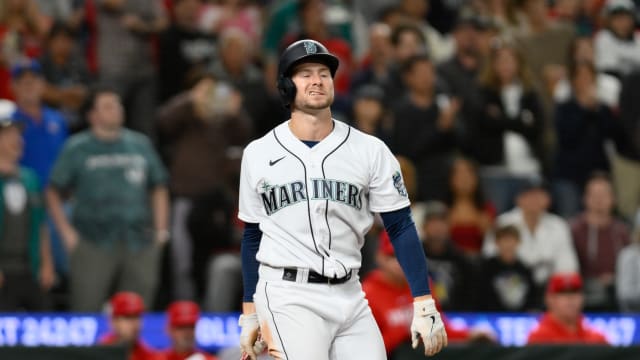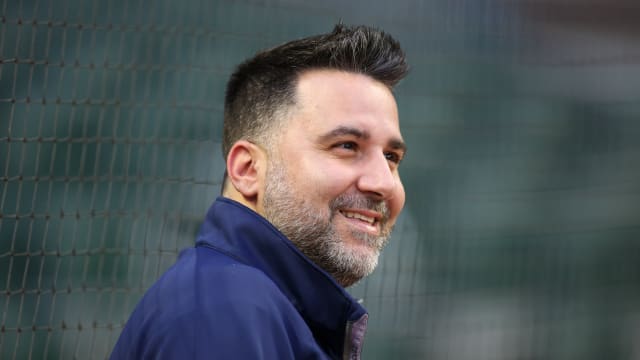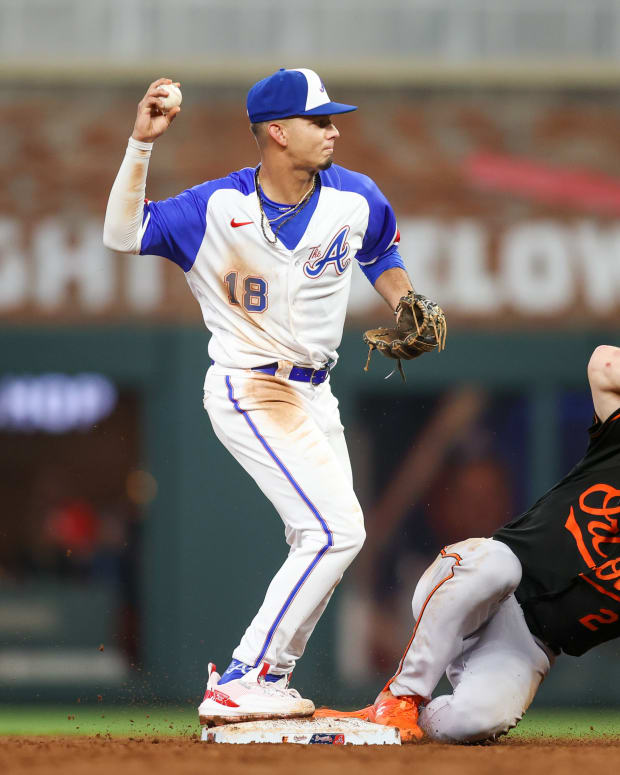
Just because the Braves haven’t spent money on a top-tier starter in free agency doesn’t mean they haven’t spent money this offseason.
There’s this idea amongst the Atlanta Braves fanbase this winter, mostly contained on social media, that the team and president of baseball operations Alex Anthopoulos is being “cheap” by not breaking the bank for some of the top tier free agents that have signed.
To recap some of those signings:
Aaron Nola signed first, going back to the Philadelphia Phillies on a seven year deal worth $172M. (For what it’s worth, Atlanta reportedly outbid Philly for Nola’s services, but he chose to stay home.) Sonny Gray was the next to sign, taking $75M for a three-year deal with the St. Louis Cardinals.
And then the Shohei Ohtani deal happened. Ten years, $700M, with an astounding $680M deferred, bringing the luxury tax calculation down to $46M a year.
(Worth noting – all of those free agents received qualifying offers and would have required the Braves to sacrifice their 2nd and 5th-highest draft picks in the 2024 MLB Draft were they to sign with Atlanta.)
We’ve also seen lots of third tier (and fourth tier) pitchers sign, as well, including Seth Lugo, Eduardo Rodriguez, Michael Wacha, Kenta Maeda, Tyler Mahle, and Jack Flaherty.
When you look across the ecosystem of Braves fans and where they congregate online (twitter and facebook groups, mostly, but occasionally on reddit as well), there’s quite a bit of angst that Atlanta’s being “cheap” by not outbidding other teams for these starters that are entering their early 30s (or, in the case of Sonny Gray, already 33 when signing).
But in reality, the Braves have been plenty active this offseason and have committed significant amounts of money, relative to the rest of baseball.
By Spotrac’s payroll calculations, Atlanta’s currently sitting on the third highest cash payroll at $208.4M and the highest CBT payroll at $242M for 2024.
Now, the offseason’s not over and there’s plenty of big dollar free agents like Matt Chapman, Cody Bellinger, and Yoshinobu Yamamoto left to sign, but it’s worth repeating:
And Atlanta’s been active in the trade market, as well, bringing in nine players and shipping out twelve (some of those nine incoming players were almost immediately shipped back out, including Marco Gonzales, Evan White, and Max Stassi). They’ve taken on multi-millions of dollars in those deals, some of which they’ve managed to shed.
Just because you took on money via trade instead of free agency doesn’t mean you didn’t spend money.
The final result of that, as of now, has been Atlanta’s securing five years of outfielder Jarred Kelenic and two years of David Fletcher for just barely more than the club option for one year of Eddie Rosario and two years of arbitration-eligible Nicky Lopez, plus the multi-year additions of several relievers (like Aaron Bummer and Ray Kerr).
Why does everyone ignore the Braves large cash payroll amount?
I think it’s down to a few factors: For starters, there’s an idea that the Braves underpay anyone that’s signed on a long-term contract. And while there’s some truth to tha,t from the perspective of Atlanta holding very team-friendly deals on Ronald Acuña Jr (8 years, $100M) and Ozzie Albies (7 years, $35M), several of the Braves long-term deals rise into the $20M+/year range as those players get into bought-out arbitration and free agent years.
Matt Olson, Austin Riley, and Spencer Strider will all spend multiple years making $22M before their deals expire, with Acuña maxing at $17M, Sean Murphy maxing at $15M, and even newly-signed reliever Reynaldo López receiving $11M in each of 2025 and 2026.
Fun fact, looking at remaining money on long-term, guaranteed deals, the Braves have the 6th-highest remaining salary commitment in 2026, at over $463M still to be paid on existing contracts (and two of those other teams above Atlanta are in their division, with the Mets at $482M and Philly at $534M.)
As much as we want the Braves to go out and sign top free agents when they’re available on the open market, that’s just not Atlanta’s MO.
The Braves typically avoid signing the big-ticket free agents, for a few reasons. The first is the Qualifying Offer – usually, those free agents have draft pick compensation attached to them, and losing a high draft pick (or two, as Atlanta’s paying into the CBT) takes that price even higher.
A great example of this is Sonny Gray – the 33 year-old signed for three years with the St. Louis Cardinals. Assuming he’s still pitching as effectively as he did this last season, he’s a free agent again at the same time that those draft picks, were they to be college pitchers, would conceivably be ready to be full-season starters in your rotation.
For as concerned as we are with the rotation after 2024, with both Max Fried and Charlie Morton becoming free agents, imagine if that was happening and we also didn’t have AJ Smith-Shawver and Hurston Waldrep as rotation options to take those innings.
(Which is also my argument for not overpaying for Dylan Cease from the White Sox, but that’s another article).
Additionally, many of the top tier free agents request and/or require contract language that favors them, whether it be a no-trade clause, an opt-out, or (in the case of Shohei Ohtani), unprecedented deferrals & the ability to opt out of the deal if specific members of the front office or ownership group leave the team.
Atlanta’s doesn’t do that stuff – it’s why Alex Anthopoulos emphatically came out prior to the Winter Meetings to shoot down the speculation that the Braves would be trading any position players on long-term deals.
No, Alex Anthopoulos has stuck true to form – striking early in the offseason to get his targeted player, and then waiting for the market to settle before coming in closer to Spring Training with “value” contract offers for veterans.
| Player | How acquired? | Acquisition Date |
|---|---|---|
| Charlie Morton | Free agency | Nov 24, 2020 |
| Matt Olson | Trade | March 14, 2022 (lockout) |
| Sean Murphy | Trade | Dec 12th, 2022 |
| Jarred Kelenic | Trade | Dec 3, 2023 |
So Atlanta’s going to bring in more players this offseason; that feels like a certainty at this point.
But the Braves aren’t going to go to the top of the market and overpay for a Blake Snell, or possibly even a Jordan Montgomery. That’s just not what they do.
Anthopoulos is working as if he has more financial capital than prospect capital this offseason, preferring to take on bad contracts to get players rather than give up quality prospects. And there’s limits to the kinds of deals you can make with that method, but it’s a sustainable strategy if you can flip those bad contracts to other teams.




Be the first to comment